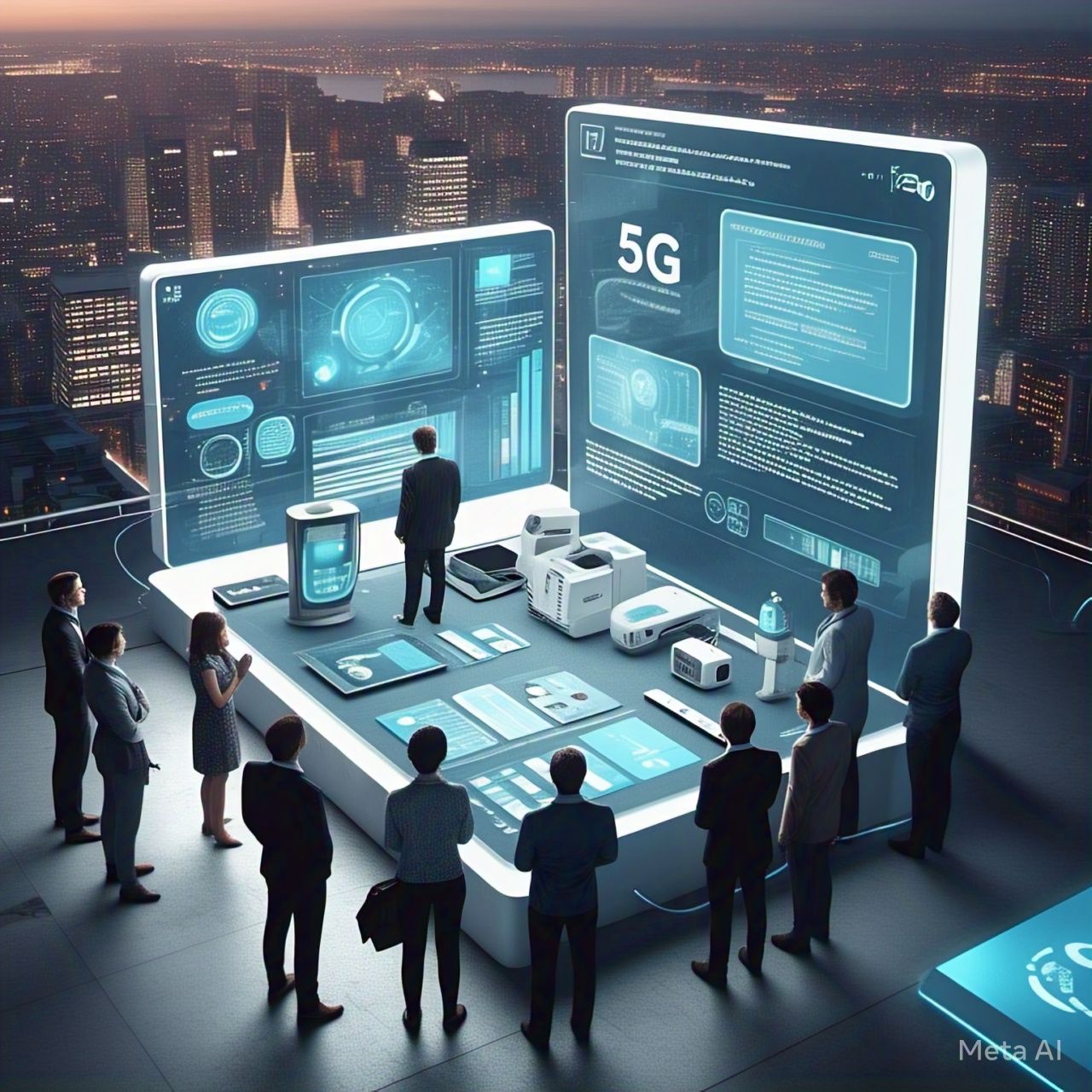Table of Contents
- Introduction
- Understanding 5G Technology
- How 5G Enhances IoT and Smart Devices
- Ultra-Low Latency
- Faster Data Speeds
- Massive Device Connectivity
- Improved Reliability
- Applications of 5G in IoT and Smart Devices
- Smart Cities
- Autonomous Vehicles
- Healthcare and Remote Monitoring
- Industrial IoT (IIoT)
- Smart Homes and Wearables
- Challenges of 5G in IoT Deployment
- Infrastructure Development
- Security and Privacy Concerns
- High Costs of Implementation
- Energy Consumption
- Future Trends of 5G in IoT
- Conclusion
- FAQs
1. Introduction
The rollout of 5G technology is transforming the way Internet of Things (IoT) devices and smart devices operate. With its promise of high-speed connectivity, ultra-low latency, and massive network capacity, 5G is poised to accelerate IoT adoption across various industries. This article explores the impact of 5G on IoT and smart devices, highlighting its benefits, challenges, and future trends.
2. Understanding 5G Technology
5G is the fifth generation of wireless technology, offering significantly improved network performance compared to its predecessor, 4G LTE. Key features of 5G include:
- Speeds up to 10 Gbps (100 times faster than 4G LTE)
- Latency as low as 1 millisecond
- Support for millions of connected devices per square kilometer
- Improved energy efficiency for devices and networks
These characteristics make 5G an ideal backbone for IoT and smart devices, enabling real-time data exchange and seamless communication.
3. How 5G Enhances IoT and Smart Devices
3.1 Ultra-Low Latency
Latency is the delay in data transmission between devices. With 5G, latency is reduced to 1 millisecond or less, enabling real-time communication. This is crucial for applications like autonomous vehicles, industrial automation, and remote surgeries.
3.2 Faster Data Speeds
5G offers speeds up to 10 Gbps, ensuring quick data transfer. This benefits high-bandwidth IoT applications such as augmented reality (AR), virtual reality (VR), and smart surveillance systems.
3.3 Massive Device Connectivity
5G can connect up to one million devices per square kilometer, supporting large-scale IoT networks such as smart cities, industrial IoT, and agricultural monitoring systems.
3.4 Improved Reliability
With its advanced network slicing capabilities, 5G ensures dedicated, high-priority network access for critical IoT applications like emergency services and autonomous systems.
4. Applications of 5G in IoT and Smart Devices
4.1 Smart Cities
5G enhances smart city infrastructure by enabling real-time monitoring of traffic, energy consumption, waste management, and security systems. Smart sensors and connected devices improve urban planning and public services.
4.2 Autonomous Vehicles
5G is essential for self-driving cars, providing ultra-fast, low-latency communication between vehicles, traffic signals, and road infrastructure. This reduces accidents and improves transportation efficiency.
4.3 Healthcare and Remote Monitoring
5G-powered IoT enables real-time remote patient monitoring, robotic-assisted surgeries, and AI-driven diagnostics. Patients can receive timely care without needing frequent hospital visits.
4.4 Industrial IoT (IIoT)
Factories leverage 5G to enable automated machinery, predictive maintenance, and real-time data analytics. This enhances productivity and reduces downtime in manufacturing and logistics.
4.5 Smart Homes and Wearables
5G enhances smart home automation by enabling seamless connectivity between devices such as smart thermostats, voice assistants, security cameras, and health wearables.
5. Challenges of 5G in IoT Deployment
5.1 Infrastructure Development
Building a 5G network requires extensive infrastructure, including small cell towers, fiber-optic networks, and spectrum allocation. This takes time and investment.
5.2 Security and Privacy Concerns
With an increased number of connected devices, 5G IoT networks become vulnerable to cyber threats, data breaches, and unauthorized access. Strong encryption and cybersecurity measures are necessary.
5.3 High Costs of Implementation
Deploying 5G technology involves significant investment in network equipment, spectrum licensing, and device upgrades. Small businesses and developing regions may struggle with adoption.
5.4 Energy Consumption
5G-enabled IoT devices require higher energy consumption, which may impact battery life and sustainability. Advancements in energy-efficient hardware and low-power communication protocols are needed.
6. Future Trends of 5G in IoT
- AI-Driven IoT: 5G will enhance AI-powered IoT applications, enabling real-time data analytics and automation.
- Edge Computing: Processing data closer to IoT devices will reduce latency and improve efficiency.
- Blockchain for Security: Blockchain integration will enhance IoT security and data integrity.
- 6G Research: While 5G is still expanding, early research on 6G networks is underway, promising even greater connectivity and speeds.
7. Conclusion
5G is a game-changer for IoT and smart devices, enabling faster, more reliable, and highly connected ecosystems. While challenges exist, the benefits of ultra-low latency, massive connectivity, and real-time data processing make 5G indispensable for the future of IoT. As technology continues to evolve, 5G will drive innovation across industries, improving efficiency, safety, and convenience.
8. FAQs
8.1 How does 5G improve IoT performance?
5G enhances IoT with faster speeds, lower latency, massive connectivity, and improved reliability, enabling real-time data exchange and automation.
8.2 What industries benefit the most from 5G IoT?
Industries such as healthcare, automotive, industrial automation, smart cities, and home automation benefit significantly from 5G-enabled IoT.
8.3 Is 5G secure for IoT applications?
While 5G offers enhanced security features, IoT networks remain vulnerable to cyber threats, data breaches, and unauthorized access. Strong encryption and security measures are necessary.
8.4 What are the biggest challenges of implementing 5G in IoT?
The key challenges include high infrastructure costs, cybersecurity risks, network expansion difficulties, and increased energy consumption.
8.5 What is the future of 5G in IoT?
The future includes AI-powered automation, edge computing, blockchain for security, and research into 6G connectivity for even greater advancements.
Table: Comparison of 4G vs. 5G in IoT Connectivity
| Feature | 4G LTE | 5G Technology |
|---|---|---|
| Speed | Up to 100 Mbps | Up to 10 Gbps |
| Latency | 50 ms – 100 ms | As low as 1 ms |
| Device Density | Thousands per square km | Millions per square km |
| Reliability | Moderate | High |
| Energy Efficiency | Moderate | Improved efficiency |
5G is revolutionizing IoT and smart devices, providing seamless connectivity, rapid data exchange, and enhanced automation across industries. As adoption grows, the potential of 5G-enabled IoT will continue to shape the future of digital transformation.




